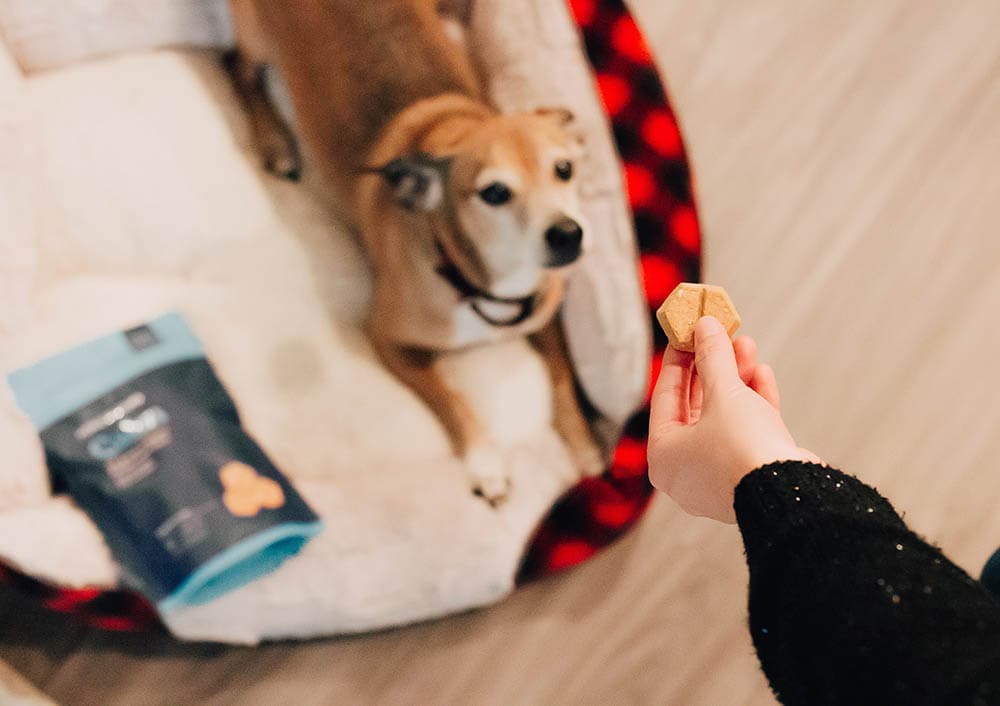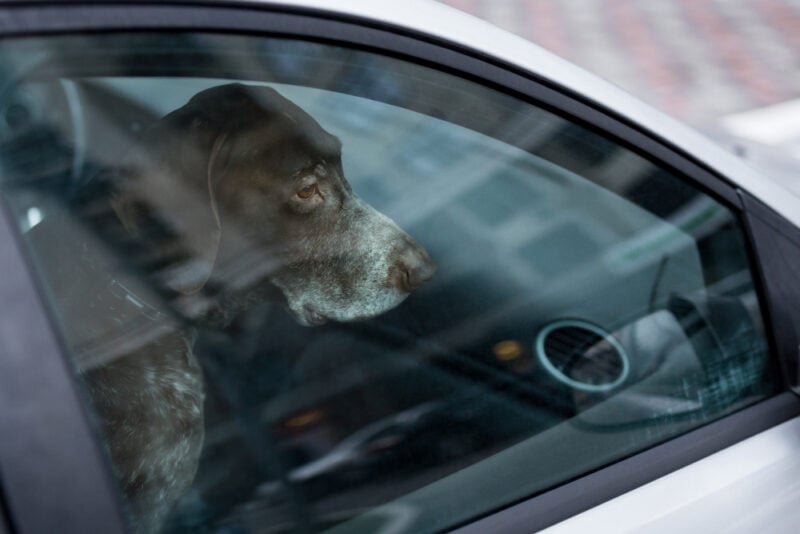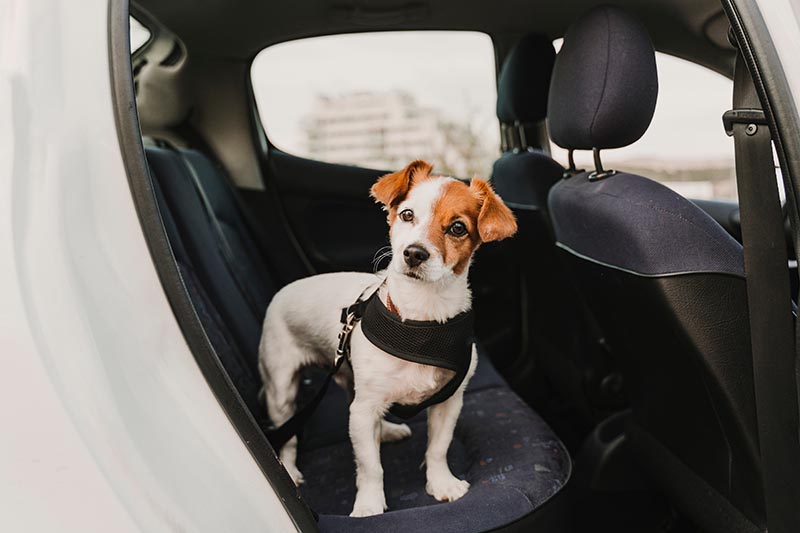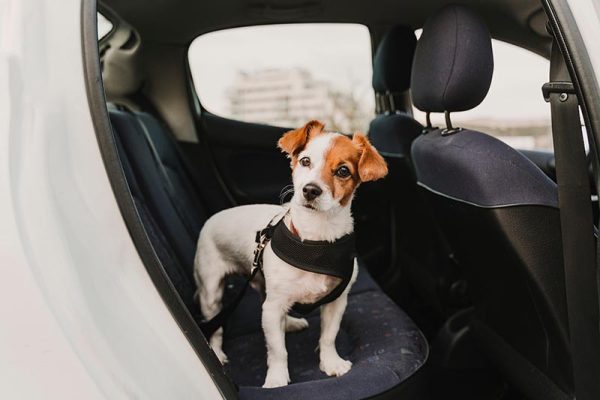While many dogs enjoy car rides, they may not always be a positive experience for every dog. Some dogs can become too excited and lack impulse control, while others may feel extremely anxious when inside a car.
It’s important for dog owners to accept the fact that not all dogs enjoy car rides. There isn’t a silver bullet answer for calming a dog down in a car, unfortunately. However, there are some things you can do to make driving with your dog a safer experience, and more enjoyable for everyone involved, including your pup! Read on for some tips and tricks to help your dog stay calm in a car.
The 10 Ways to Calm a Dog Down in a Car
1. Use Treats
Some dogs will need training to stay calm in a car. With dogs that feel anxious, you can start with having your dog sit in the car and eat its favorite treats while the car is turned off. Then, based on your dog’s comfort level, you gradually work up to turning on the car engine, and eventually going for a slow, short ride.
Dogs that get too excited in cars can do well with learning good behaviors in the car. You can teach your dog to sit in a car and use treats as positive reinforcement to encourage sitting. As your dog goes through this training, you can increase the length of time he has to sit before getting a treat.

2. Start with Short Car Rides
Going straight into a car and driving around can be too much for some dogs. To get your dog used to cars, you can take them on shorter rides around your neighborhood block. This can get them used to sitting in a car in motion and can help to prevent motion sickness.
Some dogs also develop a negative association with car rides if they’re only driven to the vet or groomer. So, you can switch things up and drive to places your dog enjoys, like the dog park or a friend’s house.
3. Use a Calming Collar
Some dogs respond well to calming collars and other calming products, like vests and blankets. Calming collars are special collars that contain canine pheromones or essential oils with scents that help relax dogs.
Not all dogs respond to calming products, so these products often receive negative reviews from frustrated dog owners. Therefore, it’s important to test them for yourself to see if they help your particular dog.

4. Use a Crate
Crates can help minimize movement and prevent injuries for a dog that can’t sit still in a car. They also help reduce stimuli, which can overexcite or cause anxiety in dogs.
Just make sure that your dog is fully crate-trained in the house before expanding training to a car. Putting untrained dogs in crates in cars can be extremely detrimental to a dog’s well-being and create an even stronger negative association with car rides.
To make the crate an even more calming environment, add your dog’s favorite toys or a cozy blanket or item of clothing with your scent on it.
5. Install Window Films or Screens
Window films can have a similar effect as crates and reduce the number of stimuli that can trigger a dog’s excitement. Films and screens can help dull the appearance of movement and activity happening outside of the car. They can also dim the interior of the car, which creates a more calming atmosphere for dogs.
You can find plenty of car window screens that roll up or are easily removable for times when you’re in the car without your dog.

6. Open Windows Slightly
Dogs see the world through their noses, so it’s important to give them plenty of opportunities to sniff around to get a better understanding of their surrounding environment. Sometimes, cracking open the window slightly can help your dog to focus on scents rather than pacing around too much in the car.
Allowing fresh air to circulate in the car can also help reduce motion sickness. Just make sure that the windows aren’t lowered so much that your dog’s head can stick out of the car.
7. Use a Seat Belt Harness
You can find several different dog car harnesses that come with seat belt attachments. These harnesses will help your dog stay in place and prevent any injuries from walking around inside the car. They also double as a regular walking harness. So, it’s easy to take your dog on car rides to hiking trails and spend time enjoying the great outdoors together.
Pet stores also sell car seats for dogs. These seats look like baskets and will protect your dog from falling if you have to brake suddenly.

8. Play Calming Music
Some dogs enjoy music and will feel calmer when listening to certain genres. Several studies show that dogs may find classical music relaxing. One study saw that dogs were able to calm down when listening to solo piano music with simple arrangements and slow tempos.
Since there can be many external sounds that either cause excitement or anxiety in dogs, playing classical music can help block out those sounds. You can also try playing white noise, which can have a similar effect of canceling background noise.
9. Exercise Before Car Ride
Physical and mental exercise can help dogs calm down because they provide opportunities for them to exert pent-up energy. So, it may be helpful to go on a walk or have your dog play with a puzzle toy or treat dispensing toy before going in the car.
Just make sure that you give your dog plenty of time to recover, drink some water and go to the bathroom before driving.

10. Stay Calm
Your dog is sensitive to your emotions. Research shows that dogs can recognize various human emotions and respond accordingly. So, if you’re acting excited, your dog may also feel that excitement. If you show anger or frustration, it will cause stress on your dog.
So, to some degree, how you handle yourself in the car will affect your dog. Staying calm and being in a good mood will help your dog to mirror your behavior and feel safe and content.
In Conclusion
If you have a car, there’s a good chance that you’ll have to drive around with your dog regularly. Training your dog to ride safely will make car rides more enjoyable and relaxing for you both. Every dog is unique, so different methods will work for different dogs.
Make sure to identify what works for your own dog before having to go on long car rides or driving to important, time-sensitive locations together. This will help you feel more prepared and make car rides less stressful for both you and your dog.
- See also: How to Dog Proof Your Car: 7 Great Tips
Featured Image Credit: eva_blanco, Shutterstock











